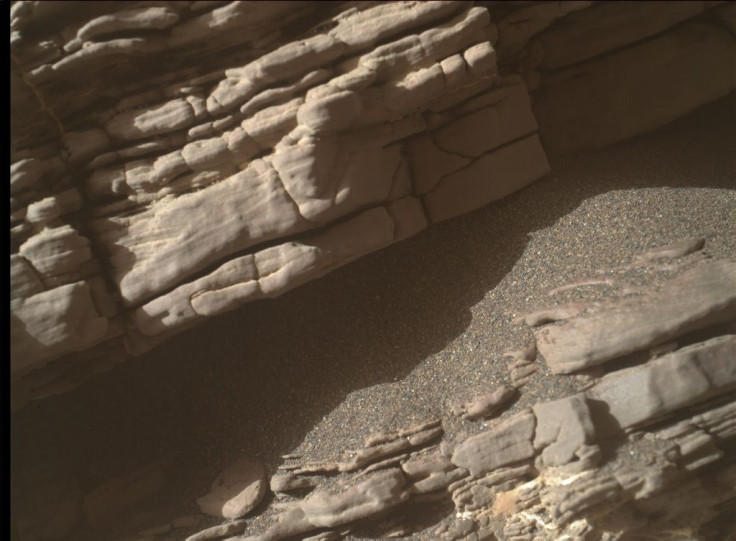NASA Finds Mars 'Proof Of Life' In Gale Crater?

A scientist who is part of NASA’s Mars Science Laboratory mission recently concluded that there’s a possibility that the Mars Gale Crater, the main search region of the Curiosity rover, could have harbored life billions of years ago.
According to a report from Slash Gear, geosciences professor Christopher House said that the Gale Crater appears to be a lake environment. House’s team discovered some fine layers of mudstone inside the crater and concluded that water could have existed there for many years. However, as time changed, the lake eventually filled with sediment and water disappeared forming stones.
When the stone eroded, the crater was eventually filled with sand. The scientist noted, however, that despite being covered by sand there are fractures of rocks that are filled with sulfate. This could have meant that water still ran through the rocks even when the lake dried up.
What’s interesting is that amid all these, sulfur gases from the sulfate and sulfide minerals formed, which indicates that the environment may have been suitable to support life in the past. House shared that they will be able to gather more evidence as the Curiosity rover moves along the region and takes a record of rocks it encounters.
NASA scientists have been working doubly hard trying to find any evidence of life on the Red Planet. Recently, the rover Curiosity was able to measure unusual amounts of methane gas in the Martian atmosphere. Back here on Earth, methane often signals the existence of living microbes.
The initial report from The New York Times shows that the methane measurements are 21 part per billion, three times the time when the methane gas spiked in 2013. However, as fast as it spiked, the methane gas also crashed making scientists believe that it was a fluke.
Based on one report, an expert on planetary climates in the solar system and head of the infrared spectroscopy lab at the Moscow Institute of Physics and Technology (MIPT), explained that the methane spike could be the NASA rover itself. The theory came from Alexander Rodin, who worked on Mars Express and ExoMars. Rodin shared that the gas may have been a result of “equipment artifact.”
© Copyright IBTimes 2024. All rights reserved.





















